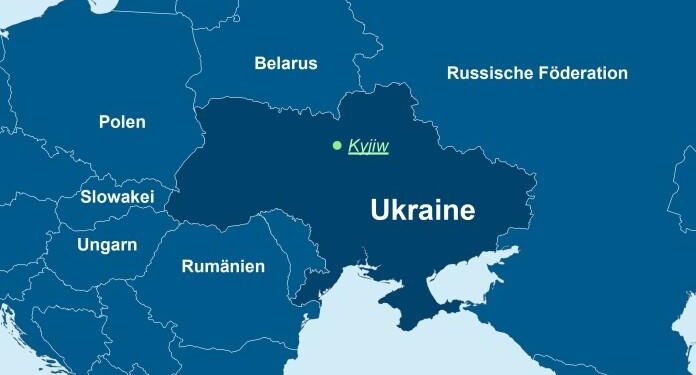Tensions between Ukraine and Hungary have escalated in recent months, raising concerns about regional stability in Eastern Europe. Rooted in historical, linguistic, and political disputes, the conflict has intensified amid Ukraine’s ongoing efforts to strengthen national unity and Hungary’s assertive stance on minority rights. This article examines the underlying factors driving the recent strain between the two neighbors, exploring how divergent priorities and external influences are shaping their fraught relationship.
Background of Ukraine Hungary Relations and Emerging Diplomatic Strains
Historically, Ukraine and Hungary have maintained a relationship shaped by geographical proximity and intertwined minority populations, notably the ethnic Hungarians residing in Ukraine’s Transcarpathian region. This shared border has prompted cooperation in trade, cultural exchange, and regional security. However, the foundation has increasingly been tested by divergent national interests and domestic policies, especially following Ukraine’s 2014 pivot towards European integration. Budapest has expressed growing concern over what it perceives as the erosion of cultural and linguistic rights of the Hungarian minority in Ukraine, prompting diplomatic protests and invoking discussions about minority protections under international frameworks.
The strains have deepened amid broader geopolitical tensions in Eastern Europe. Key friction points include:
- Language laws: Ukraine’s education reforms mandating Ukrainian as the primary language in schools have been criticized by Hungary for limiting minority rights.
- Cross-border cooperation restrictions: Hungary has occasionally restricted movement and trade across the border, citing security concerns.
- Diplomatic standoffs: Mutual accusations and expulsions of diplomats signal escalating mistrust.
| Issue | Ukraine’s Position | Hungary’s Concerns |
|---|---|---|
| Language Policy | Promote national unity through Ukrainian-language schooling | Protect rights of Hungarian-speaking minorities |
| Border Control | Secure borders against external threats | Ensure ease of cross-border movement for communities |
| Diplomatic Relations | Maintain sovereignty and territorial integrity | Address minority rights violations diplomatically |
Impact of Minority Rights and Language Policies on Bilateral Tensions
The longstanding grievances surrounding minority rights and language policies remain at the heart of escalating tensions between Ukraine and Hungary. Budapest has repeatedly criticized Kyiv for implementing education reforms that restrict the use of the Hungarian language in schools attended by the ethnic Hungarian minority in Ukraine’s Transcarpathian region. These policies are seen by Hungary as a direct threat to the cultural identity and linguistic heritage of its compatriots abroad. As a result, Hungary has adopted a firm stance by blocking Ukraine’s efforts to deepen ties with NATO and the European Union, leveraging minority rights as a geopolitical tool.
The issue transcends education, touching on broader questions of national sovereignty and minority protections. Ukrainian officials argue that their reforms aim to consolidate national unity and integrate diverse populations, especially in the context of ongoing security challenges. However, the diplomatic ripple effects are palpable, with the bilateral relationship strained by mutual distrust. Key points of contention include:
- Language usage in public institutions and schools
- Political representation of Hungarian minorities in Ukraine
- Cross-border cultural cooperation limitations imposed by both sides
| Aspect | Hungary’s Position | Ukraine’s Position |
|---|---|---|
| Education | Protect Hungarian language rights | Promote Ukrainian as state language |
| Minority Rights | Ensure cultural autonomy | Balance minority rights with national security |
| Diplomatic Relations | Leverage minority issues to influence Kyiv | Avoid external interference in domestic policy |
Strategies for Dialogue and Conflict Resolution to Ease Regional Disputes
Effective dialogue in sensitive geopolitical contexts hinges on building trust through transparent communication and acknowledging historical grievances without amplifying animosities. Stakeholders must prioritize platforms that facilitate inclusive conversations, allowing representatives from both Ukraine and Hungary to express national concerns while identifying overlapping interests, such as the protection of minority rights and border security. Establishing neutral mediators or international bodies to oversee discussions can ensure accountability and reduce bias, fostering a climate conducive to de-escalation.
- Regular bilateral meetings with clear agendas and follow-up mechanisms
- Joint cultural and educational programs promoting mutual understanding
- Establishment of conflict early-warning systems leveraging local communities
- Engagement of civil society and diaspora groups for grassroots dialogue
Conflict resolution is further strengthened by pragmatic frameworks that emphasize mutual benefit over zero-sum outcomes. Innovative approaches such as confidence-building measures-like shared economic projects or environmental initiatives-can provide tangible incentives for cooperation. The following table illustrates core conflict resolution tools applicable to the Ukraine-Hungary situation, highlighting their potential impact on reducing tensions:
| Resolution Tool | Description | Potential Impact | |
|---|---|---|---|
| Confidence-Building Measures | Joint infrastructure and cultural projects | Fosters cooperation and reduces suspicion | |
| Mediation by Third Parties | Engagement of neutral international organizations | Ensures impartiality and builds trust in negotiations |
















